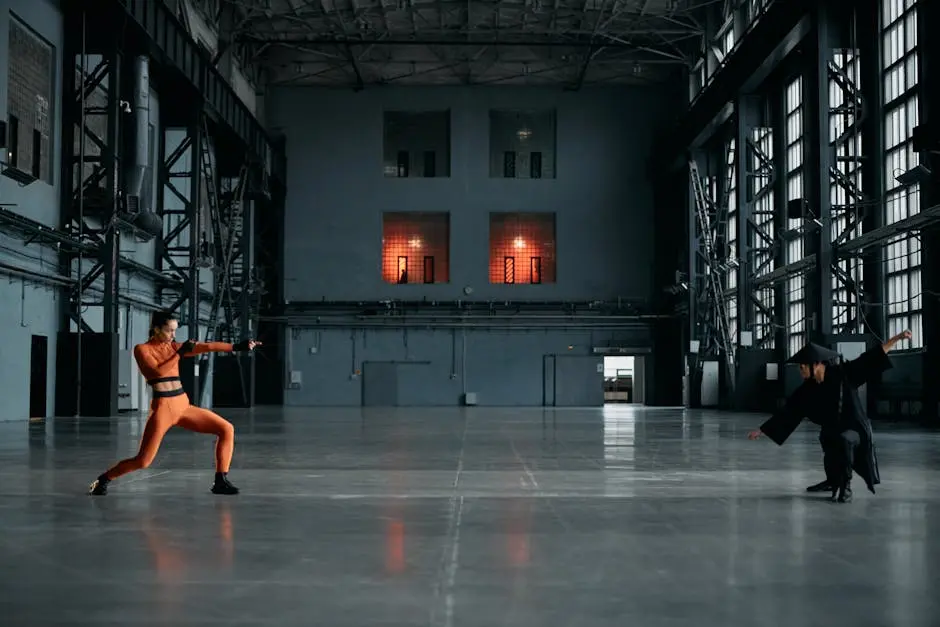A Journey Through a Classic Kung Fu Saga: Discover the Art and Tradition
Kung Fu has always been more than just a martial art; it’s a rich tapestry woven with history, philosophy, and intricate practices that have evolved over centuries. In this blog, we will embark on a journey through a classic Kung Fu saga, exploring the art, tradition, and the profound messages that come with it. Whether you are a seasoned practitioner or a curious newcomer, join me as we uncover the essence of this remarkable discipline.
The Roots of Kung Fu: A Historical Overview
Understanding the origins of Kung Fu is essential to appreciate its depth. From ancient China to modern times, we’ll explore how historical events and cultural influences shaped its development.
Kung Fu’s roots trace back to the ancient dynasties of China, a period marked by warfare and the need for self-defense. As various martial arts began to emerge, they adapted to the philosophical teachings of Confucianism, Buddhism, and Taoism. Each philosophy imbued Kung Fu with its unique moral foundation, emphasizing personal development alongside combat skills.
Furthermore, the legendary Shaolin Temple has played a pivotal role in preserving and transmitting these martial arts over the centuries. It symbolizes the fusion of physical prowess and spiritual insight, attracting warriors and scholars alike. As we navigate through this historical landscape, we will see how Kung Fu evolved not just as a fighting mechanism but as a profound system of self-improvement and community building.
Key Techniques and Styles: An Overview of Traditional Kung Fu
Kung Fu encompasses a myriad of styles, each with unique techniques and philosophies. This section will delve into some prominent styles such as Wing Chun, Shaolin, and Tai Chi.
Wing Chun, known for its close-range combat techniques, focuses on quick strikes and efficient movements. It emphasizes sensitivity through its distinct training methods, enabling practitioners to respond adeptly to opponents. The famous Ip Man adapted and popularized this style, turning it into an accessible martial art for everyone.
On the other hand, Tai Chi is revered not only for its graceful movements but also for its meditative approach. Often perceived as a slower art, Tai Chi teaches the importance of internal balance and the flow of energy, or ‘Qi.’ Practitioners of Tai Chi find that these lessons seep into their daily lives, promoting harmony and tranquility.
As we explore these styles, it’s fascinating to note how they cater to diverse needs—from the explosive power of Hung Gar to the flowing elegance of Wudang. Each style not only teaches physical skills but cultivates valuable life lessons, such as respect, patience, and adaptability.
The Philosophy Behind the Moves: Understanding Kung Fu’s Core Beliefs
At the heart of Kung Fu lies a rich philosophical foundation. We will explore concepts such as balance, respect, perseverance, and the importance of self-discipline.
Kung Fu is not merely about executing techniques; it is deeply intertwined with a philosophical approach to life. Balance, for instance, is vital not only in combat but also in our day-to-day decisions. By promoting harmony between body, mind, and spirit, practitioners learn to navigate life’s ups and downs with resilience and grace.
Additionally, respect serves as a cornerstone in Kung Fu training. Respect for oneself, the teacher, and fellow students fosters a positive learning environment where growth is encouraged. The humility learned through martial arts training translates into our interactions with others, reminding us that connection with the community is crucial for personal evolution.
Perseverance, too, is a key tenet. In cultivating this quality, Kung Fu teaches us that failure is not the end but merely a stepping stone towards success. This attitude is imperative, especially in today’s fast-paced world, where instant gratification overshadows the value of hard work and dedication.
Legendary Masters: Icons of the Kung Fu World
Throughout history, many masters have made significant contributions to Kung Fu. This section highlights the lives and teachings of legendary figures like Bruce Lee and Ip Man.
Bruce Lee, perhaps the most iconic figure in martial arts, revolutionized not only Kung Fu but also how martial arts are portrayed in popular culture. He blended traditional techniques with modern training regimens, emphasizing speed and efficiency. His philosophy of ‘using no way as the way’ challenged practitioners to find their unique path, making martial arts accessible to everyone.
Ip Man, too, significantly impacted the world of Kung Fu. As Bruce Lee’s mentor, he played a crucial role in popularizing Wing Chun. His teachings went beyond physicality, embedding a sense of cultural pride and historical significance among his students, many of whom would become masters themselves.
These legendary figures remind us that Kung Fu is not just about mastery of techniques but also about leadership, mentorship, and the ability to inspire others. The stories and philosophies of these masters continue to resonate today, encouraging new generations to explore their own paths within this rich tradition.
The Modern-Day Impact of Kung Fu: From Film to Fitness
Kung Fu has transcended its traditional roots and found its place in contemporary culture. We’ll look at how Kung Fu has been portrayed in films, its role in physical fitness, and its influence worldwide.
In modern cinema, Kung Fu has become a captivating spectacle. Films featuring martial arts not only entertain but also introduce audiences to the rich cultural heritage embedded within them. Movies like ‘Enter the Dragon’ and ‘Crouching Tiger, Hidden Dragon’ showcase not just action but also the philosophy underpinning these arts.
Moreover, Kung Fu classes have gained immense popularity in fitness regimes across the globe. Many people are drawn to the full-body workout it provides while also hoping to connect with its spiritual aspects. As learners balance mind and body through training, they discover that Kung Fu can significantly impact their mental well-being as well.
As we witness the global spread of Kung Fu, it becomes increasingly clear that this discipline continues to resonate on both personal and societal levels. It teaches kindness, resilience, and respect for others—values that are more important than ever in today’s world.
Reflecting on the Timeless Lessons of Kung Fu
As we conclude our journey through the classic Kung Fu saga, it’s clear that the art goes beyond the physical techniques and incorporates a way of life filled with discipline, respect, and continuous growth. This exploration highlights how Kung Fu not only shapes the body but also enriches the spirit and mind. By embracing the traditions and philosophies that accompany this martial art, we can all learn to face our own challenges with courage and grace.


